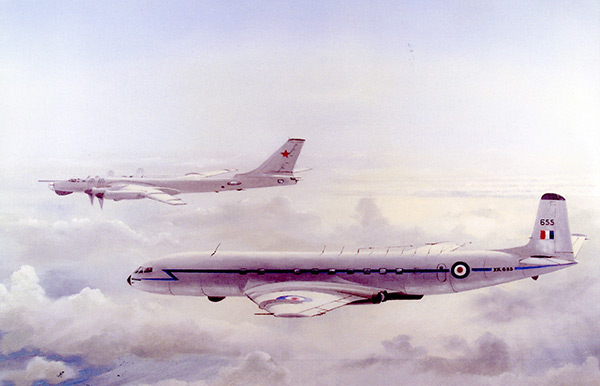
de Havilland DH.106 Comet C2R XK655 alongside Tupolev Tu-95 soviet Bear. Crown Copyright
Among the RAF’s current squadrons, 51 has a particularly diverse history. Following 3 years of service during WWI, all spent in England as a home defence squadron, the squadron reformed as a bomber squadron in 1937. WW2 service as a bomber squadron was immediately followed by 5 years flying transports, including participation in the Berlin Airlift. Following 8 years inactive the squadron was reformed in 1958 as a reconnaissance squadron, a role that it retains until the present day.
The Early Days
No 51 Squadron RFC was formed at Norwich on 16 May 1916, before moving to Thetford on 1st June. It was initially equipped with BE2C and BE12 aircraft. Later in the year BE2Es were added and the first example of the FE2B arrived. The latter was to become the unit’s main operational type for the remainder of the war. On becoming operational the squadron’s role was to protect the United Kingdom from Zeppelin raids. Alongside the FE2B the squadron operated the Martinsyde G100, BE12B and Avro 504K to train new pilots in the art of night flying. During its Great War service the squadron served successively at Hingham and Marham. At the cessation of hostilities the squadron adopted the Sopwith Camel which it operated until it disbanded for the first time, at Suttons Farm on 13 June 1919.
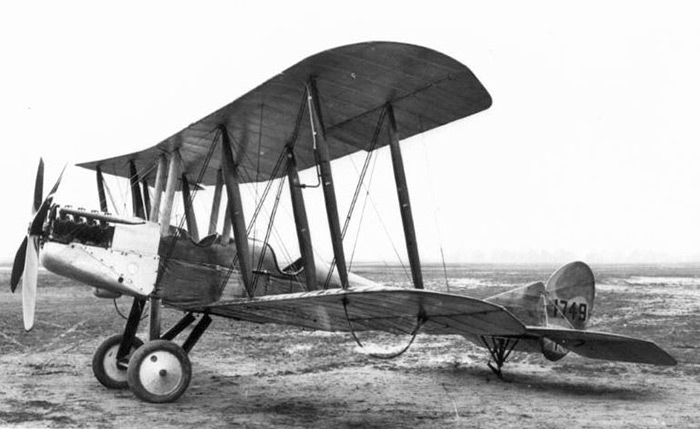
Royal Aircraft Factory BE2c 1749. Crown Copyright
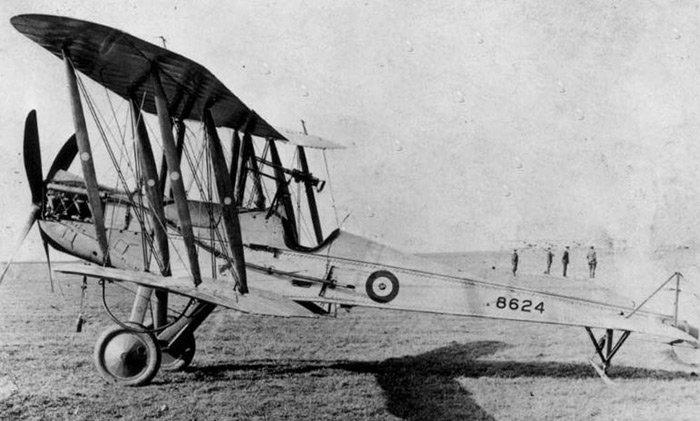
Royal Aircraft Factory BE2c 8624. Crown Copyright
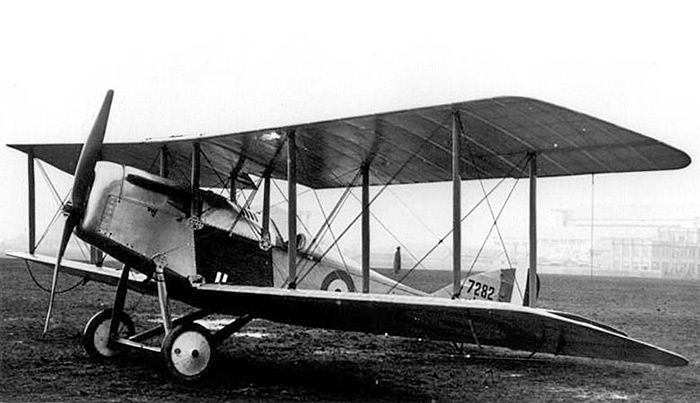
Martinsyde Elephant 7282. Crown Copyright
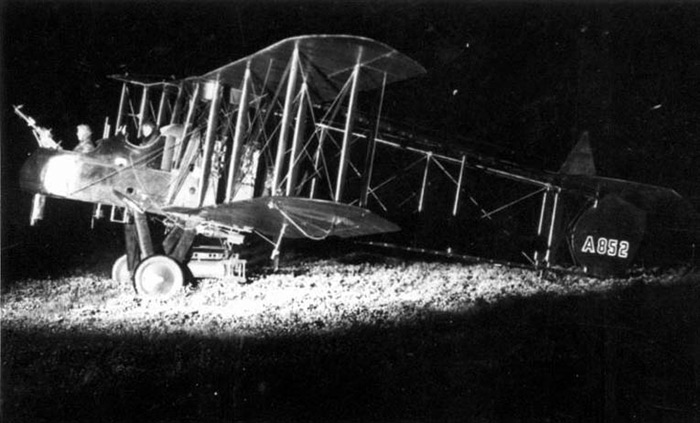
Royal Aircraft Factory FE2b A852. Crown Copyright
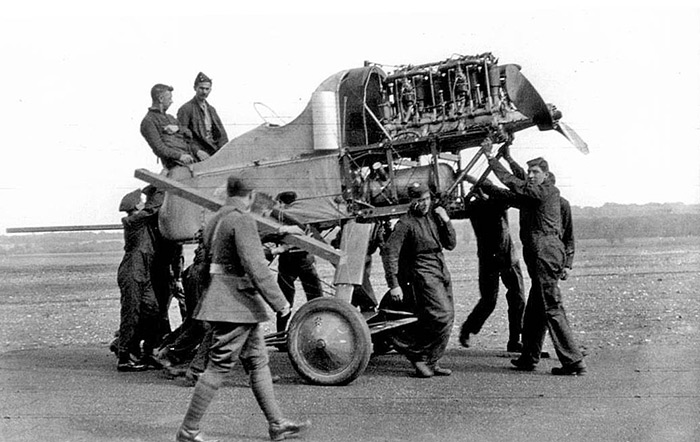
Royal Aircraft Factory FE2b Fuselage Pod. Crown Copyright
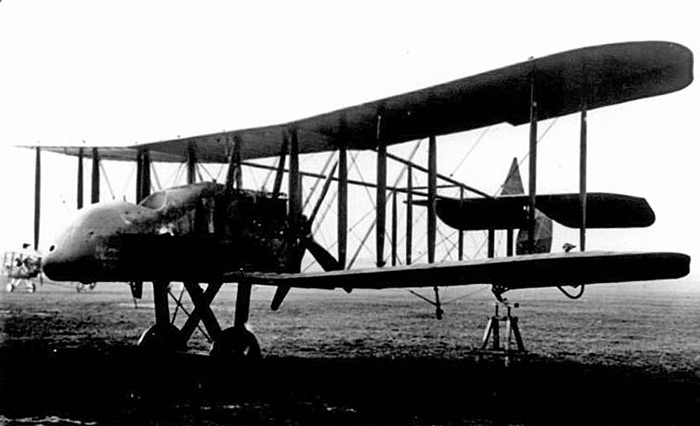
Royal Aircraft Factory FE2b A5549 converted to Single-seater. Crown Copyright
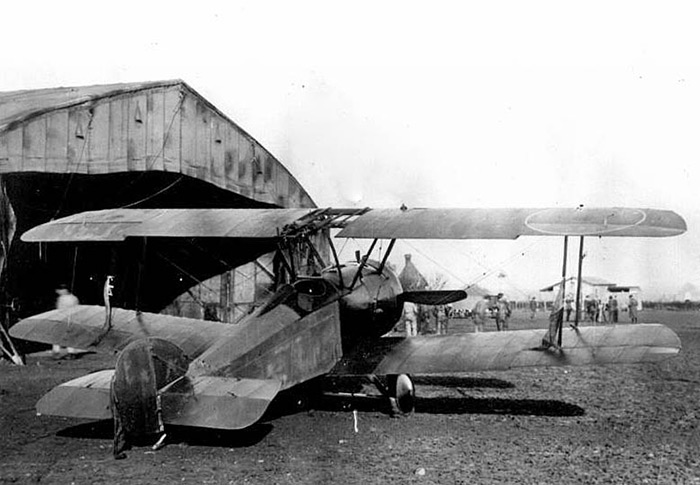
Sopwith Camel. Crown Copyright
The Bomber Era
The squadron reformed at RAF Driffield on 15 March 1937 from B Flight 58 Squadron, and immediately moved to RAF Boscombe Down. The initial equipment was the Virginia X and Anson 1. In February 1938 the squadron re-equipped with the Whitley II. During the next 4 years it operated in turn the Whitley III. IV and V while based at Linton-on-Ouse, Dishforth and Chivenor.
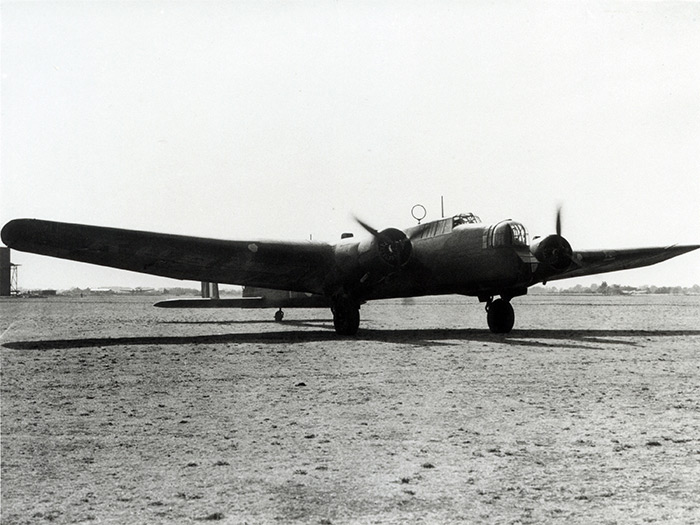
Whitley III. Crown Copyright
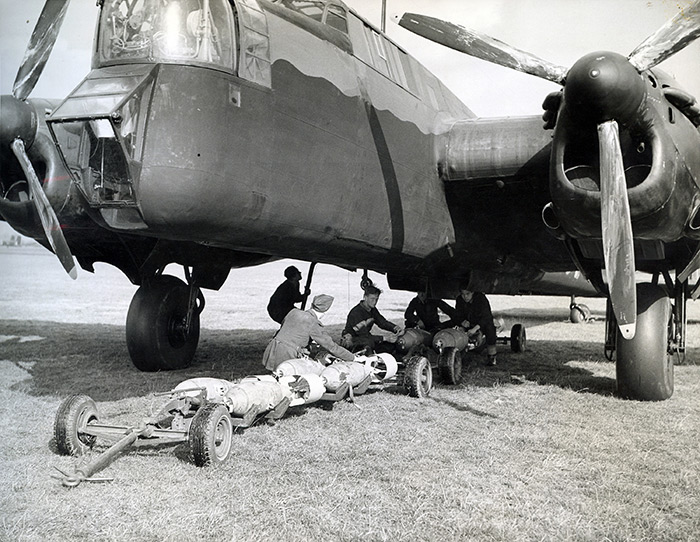
Whitley V being bombed up at Dishforth, July 1940. Crown Copyright
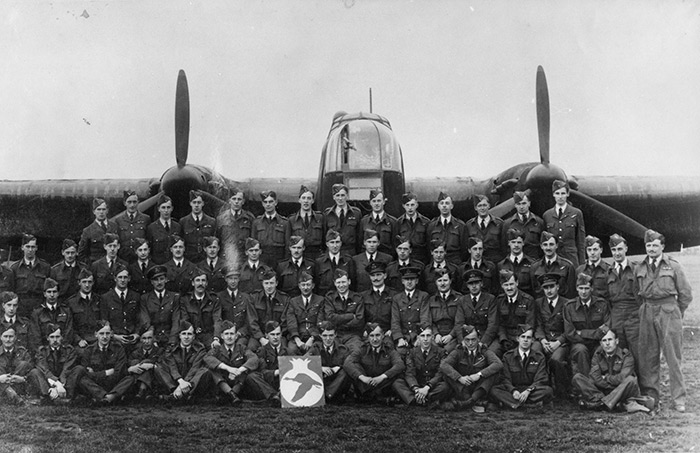
Whitley V. Crown Copyright
On the first day of hostilities in 1939 the squadron’s Whitleys were used to drop leaflets over Germany. A notable action during the Whitley era was providing the air assets for Operation Biting, the Bruneval Raid. The raid on 27/28 February 1942 was an airborne forces operation to steal pieces from the Wurzburg radar intallation at Bruneval Northern France to allow technical evaluation. 51 Squadron was chosen to transport the 120 members of the airborne forces, who were evacuated by MTBs after the successful raid. The squadron was led on the raid by the squadron commander Wg Cdr PC Pickard. Pickard was already well known, having featured as the pilot of “F for Freddie” in the film Target For Tonight while he was a Squadron Leader on 149 Sqn. Later, after promotion to Group Captain, he was to gain even greater fame, sadly posthumously, for leading Operation Jerico, the raid on Amien jail.
On 27th October 1942 the squadron moved to RAF Snaith with a change of type to the Hallifax BII. The Merlin engined Halifax BII was replaced by the Hercules engined BIII in January 1944.
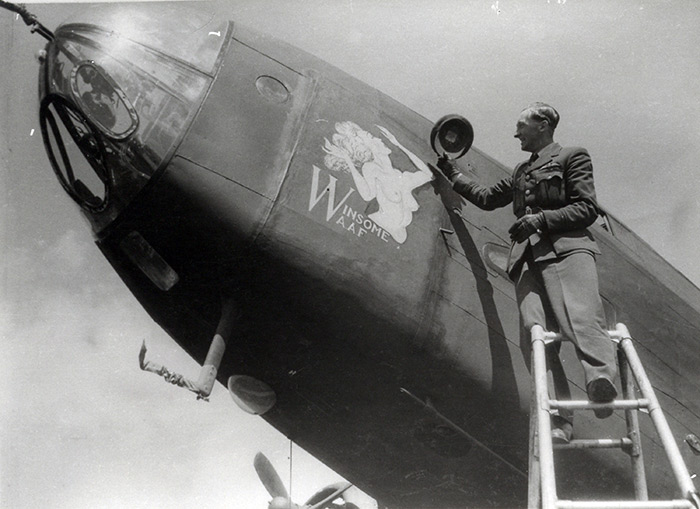
Handley Page Halifax III LW497 W Winsome WAAF. Crown Copyright
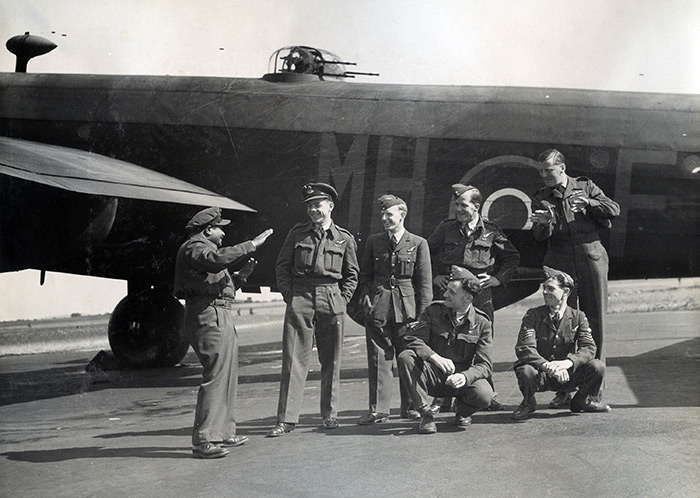
Halifax Crew. Crown Copyright
The association with Snaith and the Halifax was to remain for the remainder of the war in Europe. Indeed, Snaith remains the location of the squadron association’s twice-annual reunions.
Transport
The end of the war in Europe saw a major reduction in the need for bomber squadrons and a rise in the need for transports. The squadron re-equipped initially with the Stirling CV and, in January 1946, with the York C1. In the early days the tasks included the repatriation of prisoners of war and personnel due for discharge, including from India and the Far East. Then in May 1948 came the start of Operation Plainfare, the Berlin Airlift. 51 Squadron, based at Wunsdorf, played a significant part in the British contribution to the allied air bridge that, for the year ending on 12th May 1949, provided all the essential requirements of West Berlin. During its transport era the squadron were based in turn at Leconfield, Stradishall, Waterbeach, Abingdon and Bassingbourn before disbandment on 30th October 1950.
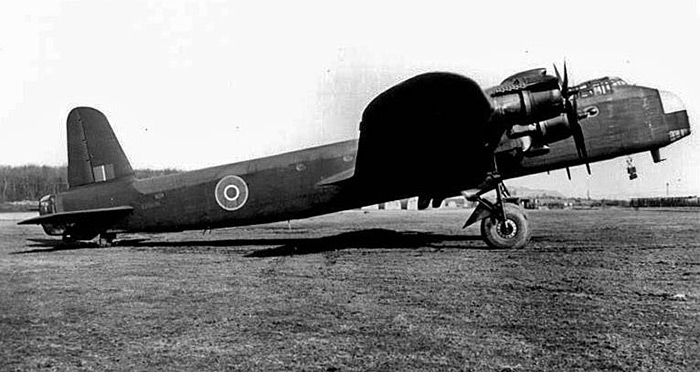
Short Stirling IV. Crown Copyright
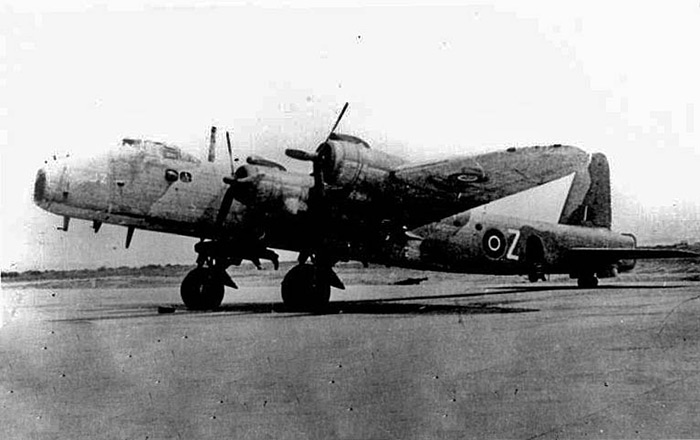
Short Stirling V. Crown Copyright
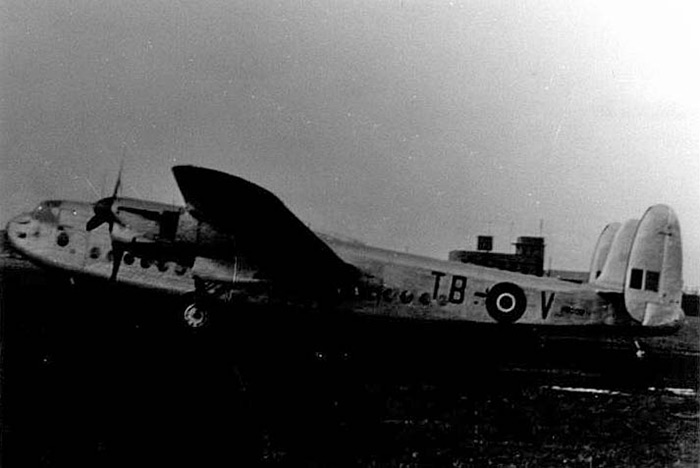
Avro York C1. Crown Copyright
Reconnaissance
The current phase of 51 Sqn’s history started on 21 August 1958 at RAF Watton when 192 Sqn was renumbered.
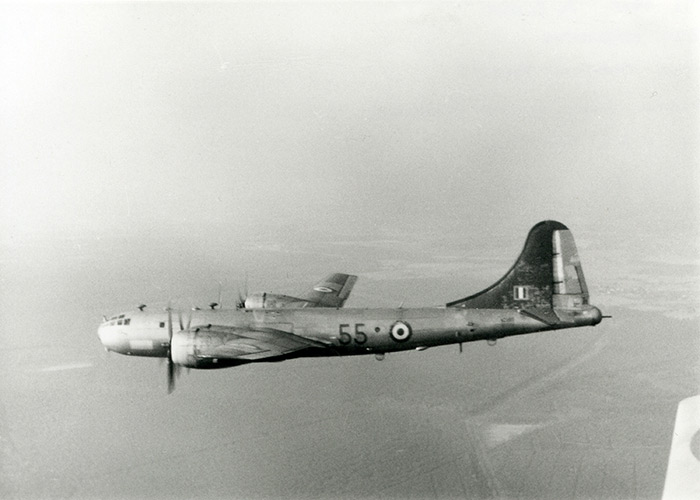
Washington B1 WZ966 192 Sqn. Crown Copyright
B-29 Washingtons of 192 Squadron as operated immediately before the squadron was renumbered as 51 Squadron.
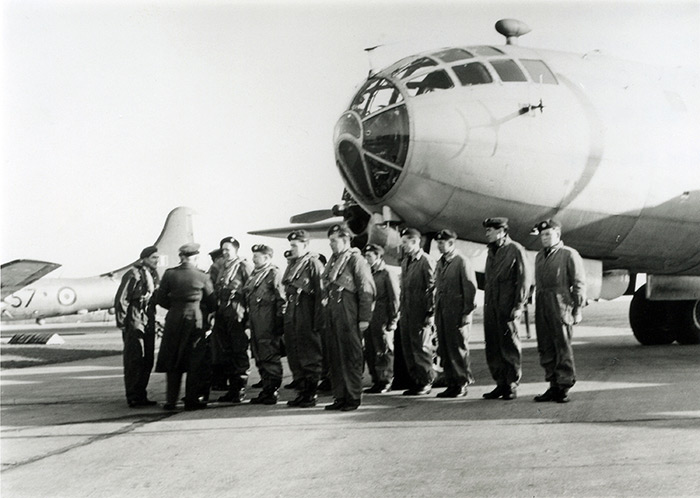
Washington B1 Crew. Crown Copyright
The squadron was equipped with the Canberra B2, Canberra B6 and Comet C2R. The B2s were relinquished in 1959 but the B6s and Comets served until 1975 and 1976 respectively. The squadron moved on 31 March 1963 to RAF Wyton, which was to be its home for the next 32 years.
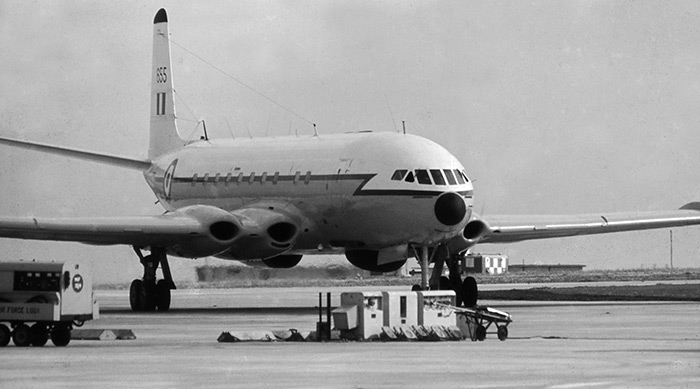
Comet C2R XK655. Image courtesy of Richard Caruana
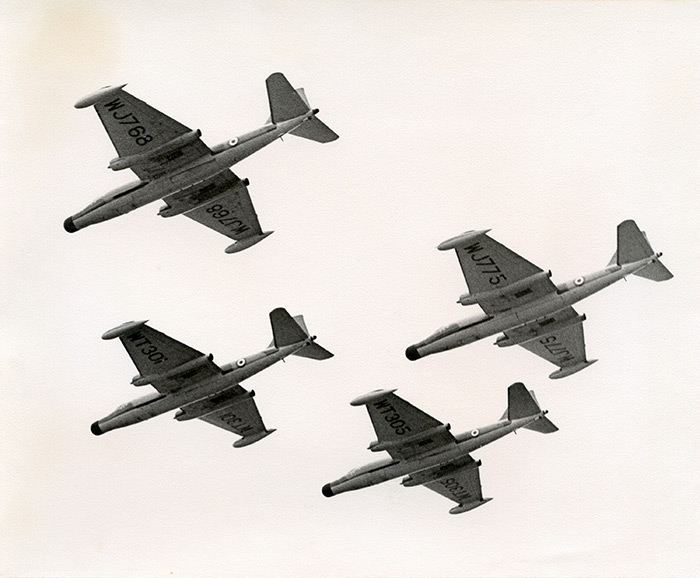
A four-ship formation of Canberra B6 aircraft. Crown Copyright
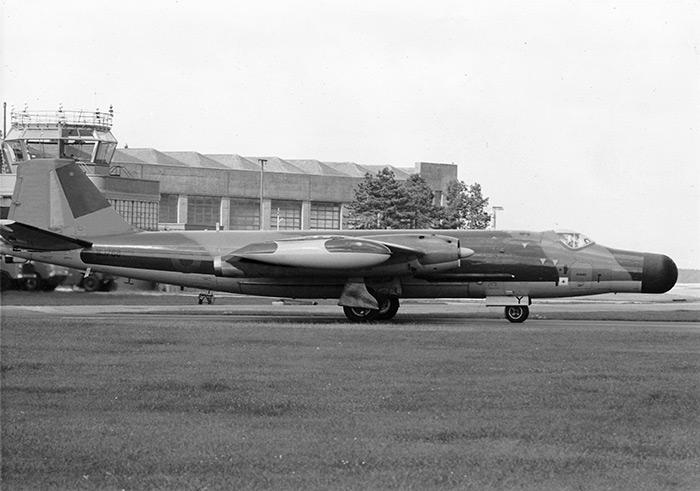
Canberra B6. Crown Copyright
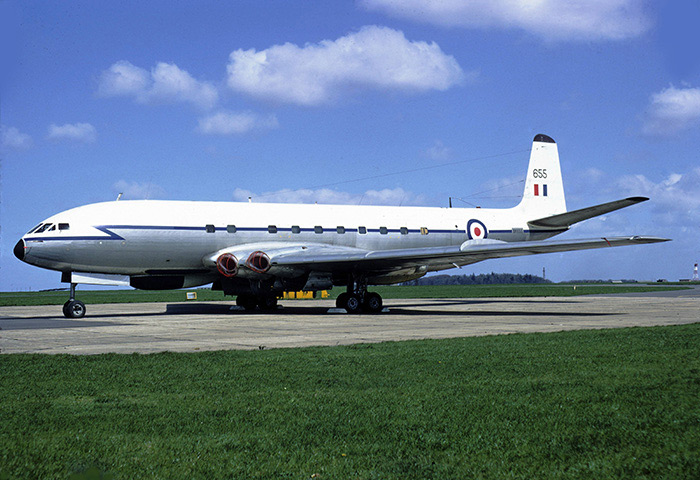
de Havilland Comet C.2R XK655 RAF 51 Sqn, 29th April 1970. Image courtesy of The Adrian M. Balch Collection
In the mid 1970s the Comets and Canberras were progressively replaced by 3 Nimrod R1s.
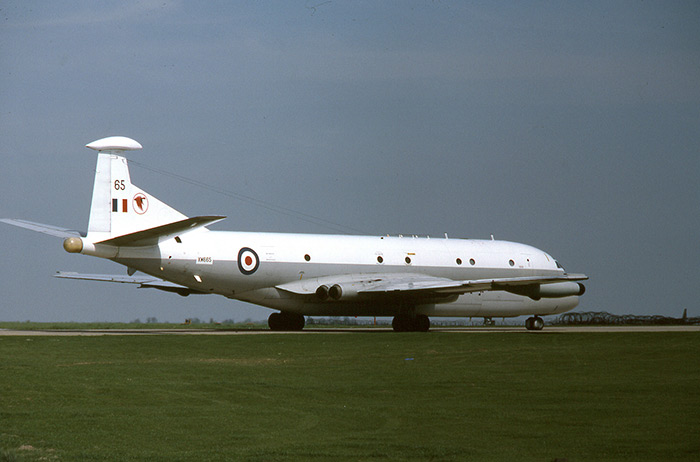
Nimrod R.1 XW665 51 Sqn at RAF Wyton, April 1979. Image courtesy of David Hedge collection
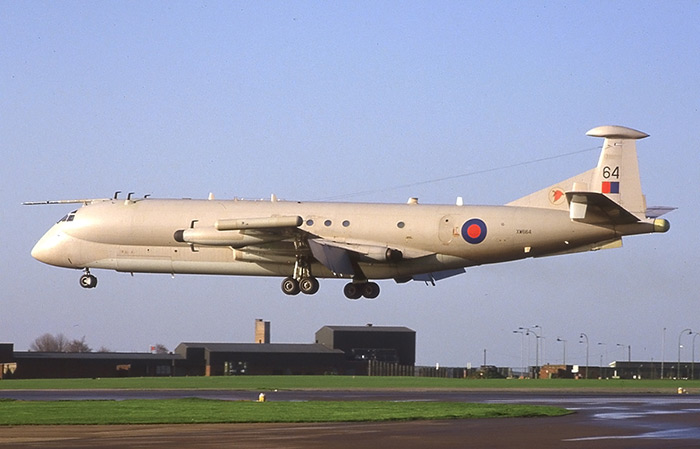
Image courtesy of David Hedge collection
They were to be the workhorses of the squadron until retired in 2011 following the decision to withdraw the whole Nimrod fleet. The squadron had moved in April 1995 to its current home of RAF Waddington.
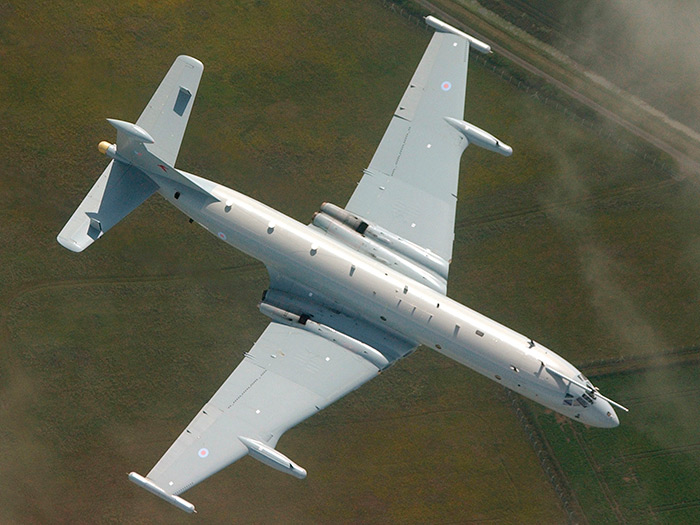
Nimrod R1. Crown Copyright
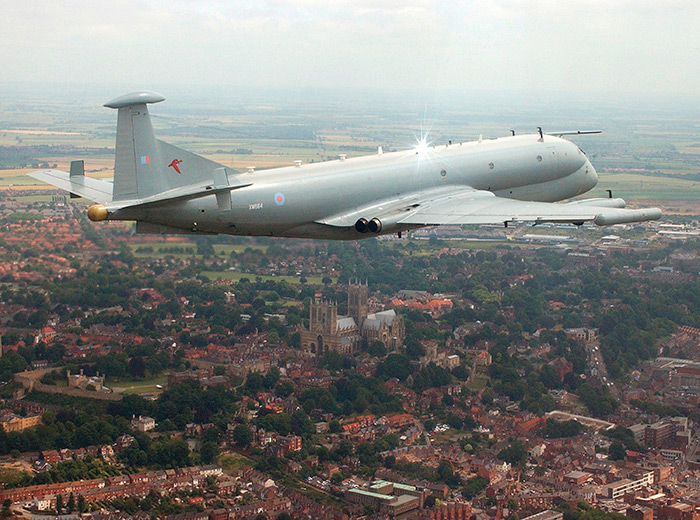
Nimrod R1 XW664 with Lincoln Cathedral in the background. Crown Copyright
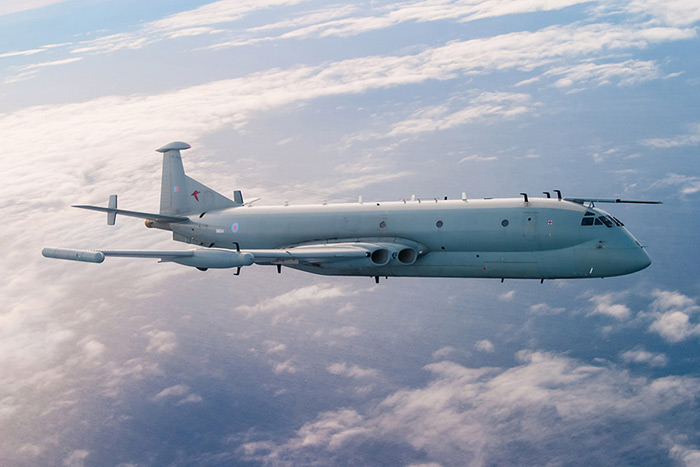
Image courtesy of Philip Stevens/Target Aviation Photography
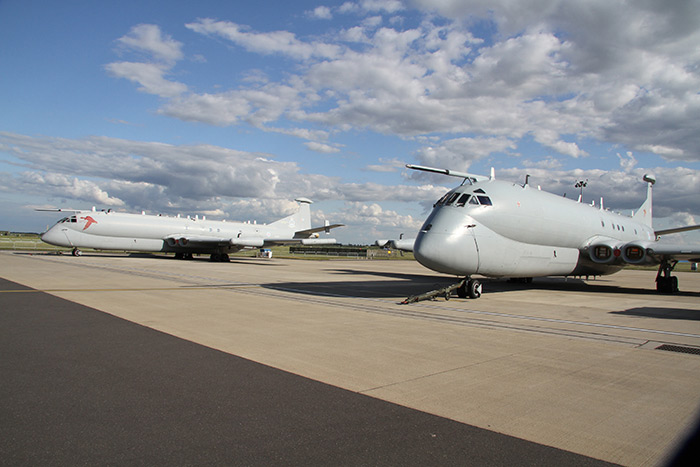
Nimrods R1 XV249 and XW664 on static display at Waddington Air Show 2011, shortly before their retirement flights. Image courtesy of Bob Franklin
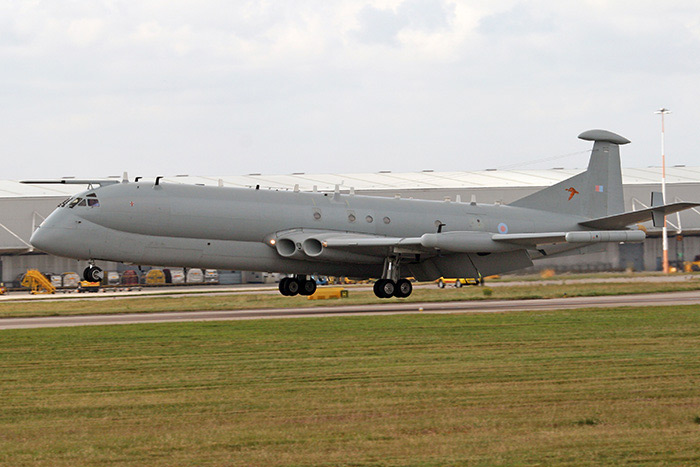
XW664 lands at East Midlands Airport at the end of its last flight, 12th July 2011. Image courtesy of John Bradshaw
In June 2011 the last operation Nimrod XV249 was flown to Cotswold Airport to be dismantled for road transport to the RAF Museum Cosford. It was handed over to the museum on 28 September 2012 becoming the sole representative of the whole Nimrod fleet in the national collection.
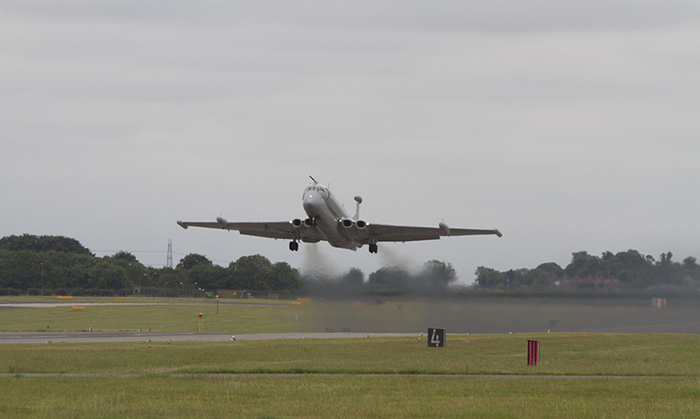
Nimrod R1 XV249 takes off from RAF Waddington on its final flight to Cotswold Airport (Kemble). Image courtesy of Ian Bracegirdle
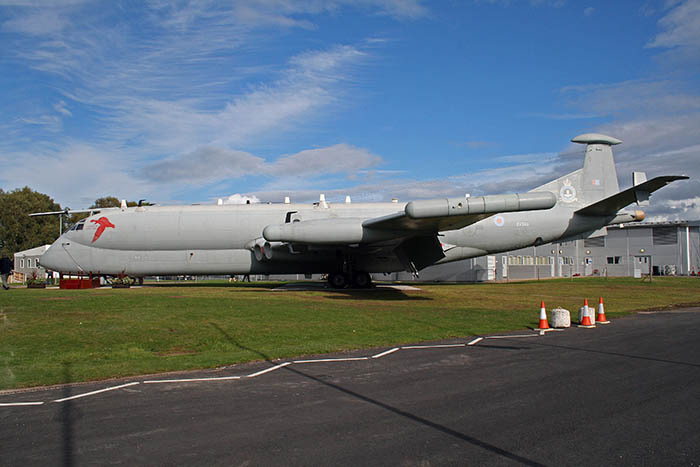
Nimrod R1 XV249 in its final resting place at Cosford Air Museum. Image courtesy of John Bradshaw
In December 2013 the first replacement aircraft for 51 Squadron arrived in the form of Rivet Joint RC-135W ZZ664, followed in later years by ZZ665 and ZZ666 which brought the Squadron up to its normal strength of three aircraft.
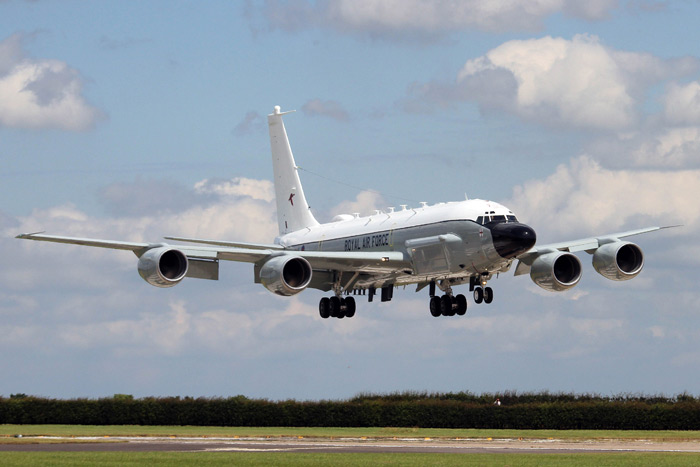
Boeing RC-135W Rivet Joint ZZ664. Image courtesy of John Bradshaw
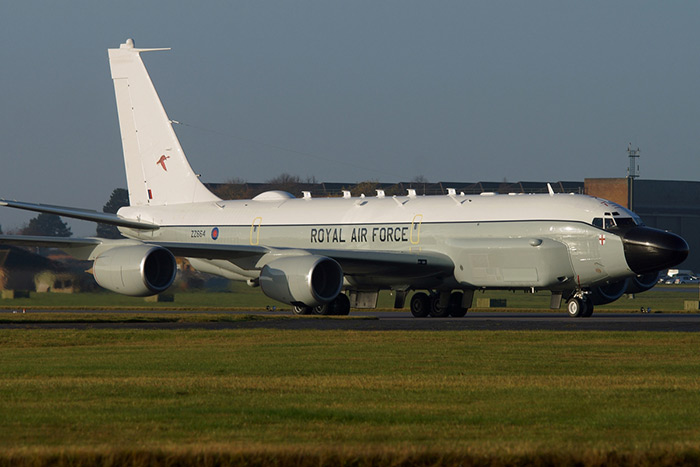
Boeing RC-135W Rivet Joint ZZ664, 51 Squadron RAF Waddington. Image courtesy of Jamie Ewan
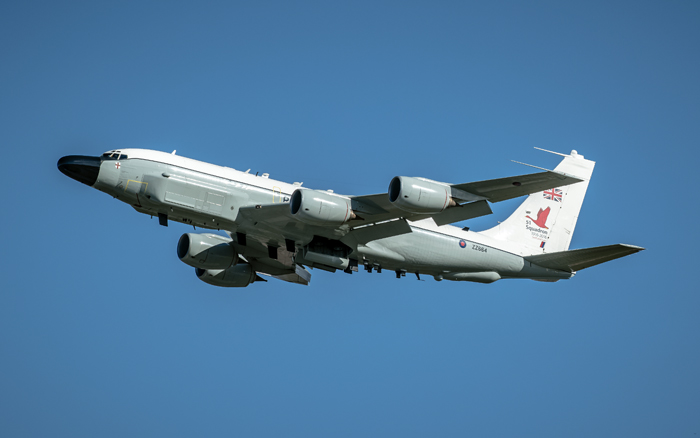
51 Squadrons RC-135W Rivet Joint with the 100th anniversary tail art. Image courtesy Ade Carver.
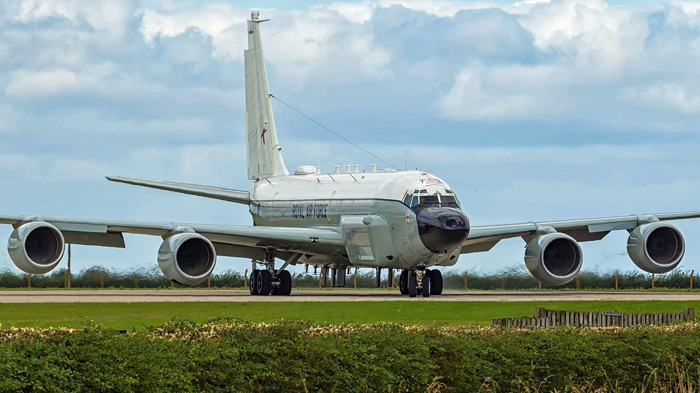
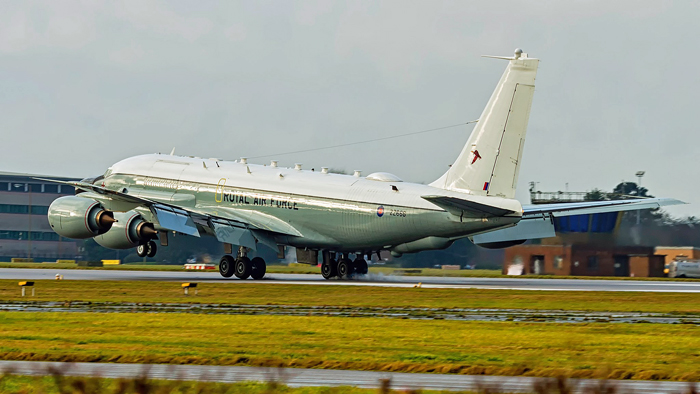
Images courtesy of Les York